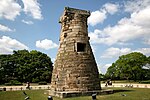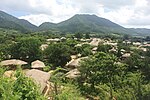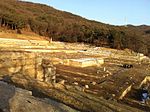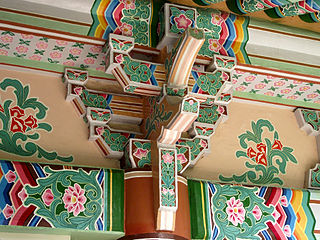The United Nations Educational, Scientific and Cultural Organization (UNESCO) World Heritage Sites are places of importance to cultural or natural heritage as described in the UNESCO World Heritage Convention, established in 1972. [1] Cultural heritage consists of monuments (such as architectural works, monumental sculptures, or inscriptions), groups of buildings, and sites (including archaeological sites). Natural features (consisting of physical and biological formations), geological and physiographical formations (including habitats of threatened species of animals and plants), and natural sites which are important from the point of view of science, conservation or natural beauty, are defined as natural heritage. [2] The Republic of Korea (South Korea) accepted the convention on 14 September 1988, making its historical sites eligible for inclusion on the list. As of 2023 [update] , there are 16 World Heritage Sites in South Korea, and a further 12 on the tentative list. [3]
Contents
The first three sites of South Korea, the Haeinsa Temple, Jongmyo Shrine, and Seokguram Grotto and Bulguksa Temple, were inscribed on the list at the 19th Session of the World Heritage Committee, held in Berlin, Germany, in 1995. [4] The most recent site listed was Gaya Tumuli, in 2023. [3] Getbol and the Jeju Volcanic Island and Lava Tubes are natural sites; the other 14 sites are cultural. [3]































